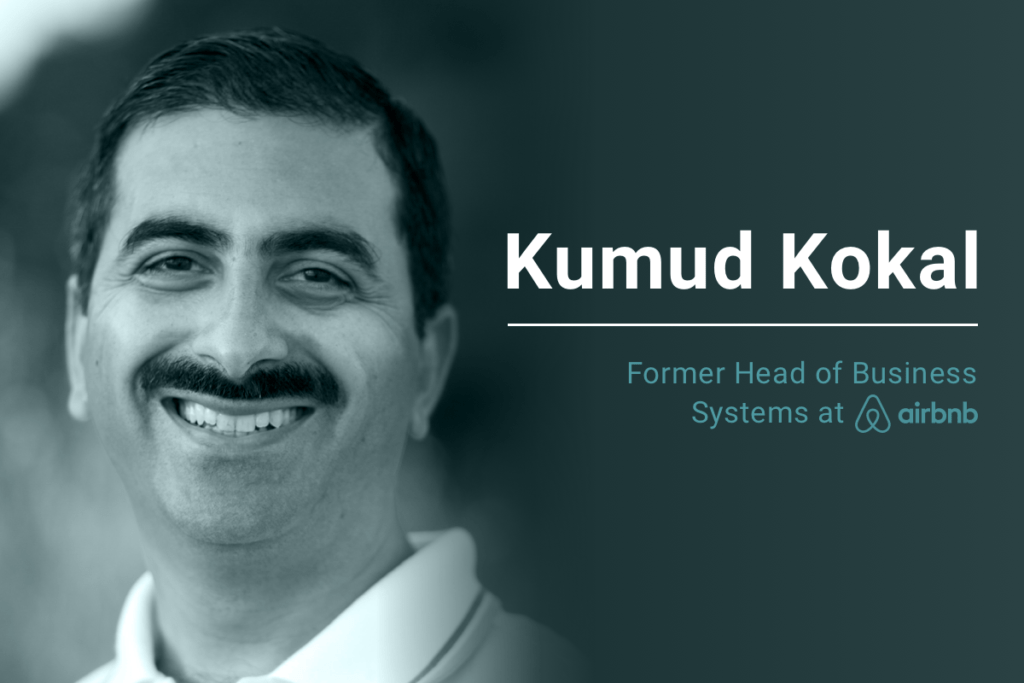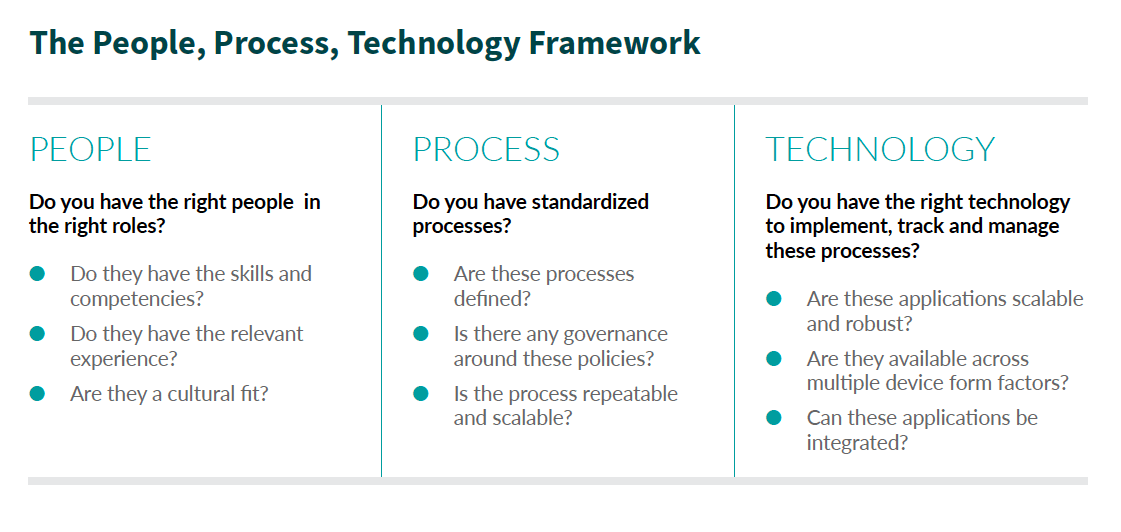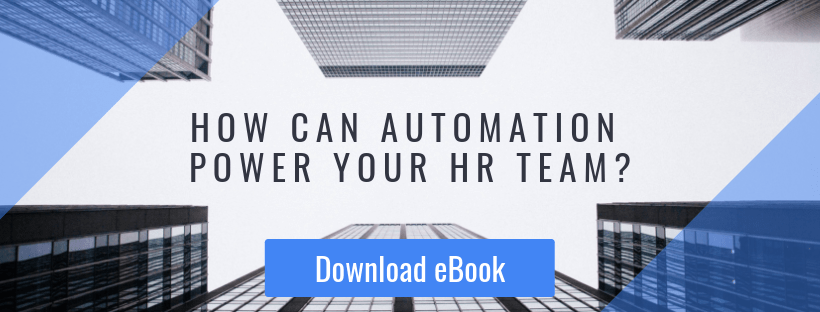This is a guest post from Kumud Kokal – Former Head of Business Systems at Airbnb and current Director of Enterprise Applications and Insights at Stitch Fix.
In the past decade, companies have been able to expand and scale at a pace that we have never seen before. It is in this environment that the Harvard Business Review coined the term “hypergrowth.” Though most people equate hypergrowth companies with startups and technology companies, the World Economic Forum points out that the Fourth Industrial Revolution is making hypergrowth a reality for all industries:
“The 1990s and 2000s saw the rapid rise of internet giants, but as software and computing technology have supportively reinforced the progress in other domains, we are now seeing data analytics, machine learning and platform opportunities that are only the beginning as entire industries undergo transformation …
…. Not only are young firms finding themselves with massive multibillion dollar valuations within four to five years of their founding but also firms that are over 100 years old are poised to create staggering revenues with new technologies and business models.”
When I joined Airbnb, the company was six years old and we were beginning to experience “hockey stick growth.” However, a lot of HR processes were manual, we were spending almost 80% of our time in operational HR work and very little time in projects that would automate HR processes, deliver an amazing employee experience, and ultimately help us achieve our mission of belonging. By creating a balanced relationship between the right people, efficient processes, and world-class technology over the last 4 years, we were able to change that, ultimately giving us space to focus on strategic work and deliver an incredible employee experience. I believe every company can and should make the shift from operational work to strategic work.
Related: Real-world examples of tactics that SaaS businesses use to grow
Solving Challenges with People, Process, and Technology
My 20+ years of experience has taught me that every business problem can be solved by having a healthy balance of People, Process, and Technology. This PPT triangle is critical for increasing employee engagement, delivering an amazing experience, and making your vision a reality.
Related: 7 popular Workday workflow automations
Why Create a Holistic Employee Experience?
We are all aware that there’s a war for talent today. To attract, retain and promote the best talent, it is imperative that companies provide a holistic employee experience. The competitive advantage lies in providing a cohesive experience that starts from candidacy and continues until after the employee leaves a company; you want all the right boomerang employees back, enriched with external experience. This has been true, not only at Airbnb, but at every company I’ve ever worked for.
At Intuit, the work that I was most privileged to be a part of, centered around mapping the employee journey. We built a process map of the entire hire-to-retire process, identifying the key moments of truth where you can create delight. Those were the areas we focused on improving.
When I joined Airbnb, one of the six company values was “Every Frame Matters”. This was inspired by the classic Disney animations where each frame focused on the minute details to deliver a heartwarming and memorable experience. Leveraging this value, we mapped out the candidate and the employee journey, frame by frame. Again, we highlighted not only the key moments of truth, but opportunities to create delight as well. Then we embarked on optimizing the process by leveraging technology to deliver a great employee experience.
Having a well defined, repeatable and scalable process is the first step. In a smaller company, this process can be implemented by a small team of people. However, in a hypergrowth environment, you cannot afford to solve the problem just by adding more people. This is where technology and automation are critical. Given the growth we were experiencing, it became obvious that we have to automate our processes for us to scale and keep up with the growth of the organization.
Automating Processes at Airbnb
With Airbnb growing so quickly, it was an easy choice to begin automating recruiting. We were receiving millions of resumes on an annual basis and we had to completely rethink how to process such a high volume in a high-touch environment. Leveraging our People, Process and Technology framework, we began to identify the key people, document our process maps, and build real-time integrations to connect our applications. By automating the data flow between our candidate system and the core HR system, we were able to eradicate 24+ Excel/Google Sheets, save upwards of 100 manual hours of work each week, reduce our error rate by more than 65% and create a SOC compliant process that met the needs of internal auditors. More importantly, this real-time integration helped the recruiting and the HR operations team keep up with the headcount growth. As a result of this automation, these teams were able to focus on more strategic work related to recruiting, rather than matching data across systems or manually checking on approvals. As an added benefit, it lead to a much higher employee engagement of the members of these teams.
We kept marching. Next, we improved the onboarding process. Since onboarding is the first interaction the employee has with the company, we wanted to make sure that their experience was hassle-free and intuitive. We accomplished this by automating the I-9 process in the US, as well as enabling employee self-service for benefits and personal data. This allowed them to complete their new-hire tasks quickly and allowed them to get to more interesting work sooner. Again, this lead to higher employee engagement at the beginning of their journey in the company, as well as greater productivity.
Once employees were hired and onboarded, the next stage of their journey was performance and growth. In partnership with our Talent Management team, we defined an end-to-end performance management process. We then integrated all the relevant applications and launched a program that allowed employees to manage their goals, reviews and feedback in one place. It enabled employees and managers to be on the same page about expectations and deliverables and served as a communication tool during one-on-one and goal review meetings.
We continued this process with learning & development, offboarding, and, much more. In my four years at Airbnb, we built over 250 integrations across HR and Finance but automating the Hire to Retire process components was definitely one of the highlights of our work.
Implementing the PPT Triangle at Your Company
I’ve always believed that technology enables the process and not the other way around.
Ensure that your processes are well defined and simplified as much as possible, before worrying about the technology. A convoluted process with the best technology is still a recipe for failure.
When you are able to look ahead instead of constantly focusing on troubleshooting, you can create a smoother employee journey, which can be your main differentiator in the ever-changing world of work. HR teams face a lot of pressures today, both internal (pressure to be useful and aligned with the rest of the business) and external (like the war for talent). When you’re looking to solve your HR team’s problems, keep all three endpoints of the PPT triangle in mind when mapping their employee journey just like the rest of the organization.
Integration and automation are some of the best areas to invest in for a company, as they make teams more efficient and effective. They’re invaluable in tying together the apps and processes within (and around) the employee journey, ultimately freeing HR to do the more strategic work of aligning with, and enabling, the goals of other departments across the company. This leads to higher employee engagement all around. These engaged employees are more productive, they build better products and services, which leads to more satisfied customers and higher revenue.
I wish you the best in your journey of creating an amazing employee experience at your organization.
Kumud Kokal
You can contact Kumud on Linkedin or Twitter:
in/kumudkokal | @kumudkokal
How do you create moments of delight for your employees?


